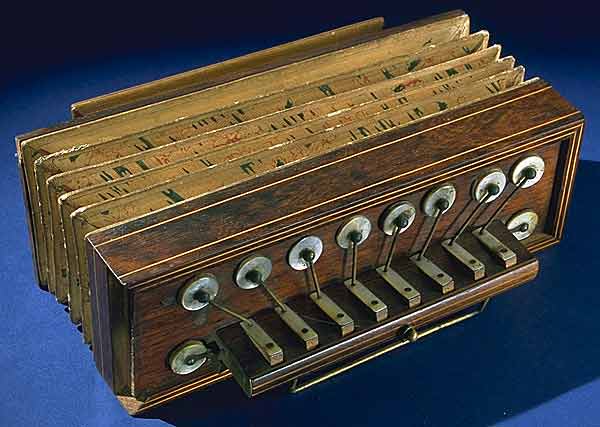The flutina is a wind instrument and an early precursor of the diatonic button accordion. The initial version of this instrument dates back around the year 1831 and was constructed by Pichenot le Jeune. This instrument was also deemed as one of the first accordions that are capable of playing a melody. It has one or two rows of treble buttons that can play the tonic of the scale. The term flutina is a specific English name of the accordeon meelodique, accordeon diatonique, and accordeon romantique.
During the 19th century, instrument makers have invented several distinct names for the new versions of the flutina. Also, the English dealers of the musical instrument would switch the brass reeds of the French instruments and replace them with steel reeds. Then, these English dealers would stamp their own company name inside the instruments. This process was a common practice during that time and has somehow continued to be used by some reputable and disreputable dealers of musical instruments.
These names which the French makers have given to these instruments have the pallets on the outside. However, the name flutina had implied an accordion that has a pallet opening on its interior side, above the buttons. It also has an air exiting from the narrow slot at the back of its protruding keyboard. With this feature, the flutina was supposed to give a flute-like tone to the reeds. It is still unknown whether the French instrument makers ever used the name ‘flutina.’
According to history, the earlier version of the flutina was the ‘clavier melodica’ that was made in 1831. The first recorded factory that manufactured the flutina was in a factory in Paris, Napoleon Fourneaux. Meanwhile, another version of this instrument that was patented in the earlier year of 1829 was named ‘the Accordion of Cyril Demian.’ In the patent, it was described that it has five pallets and ten chords. In playing this accordion, the sound depended on which the player will move the bellows. In fact, if one key is pressed, it could create about two chords. Some types of this instrument had single notes and two rows of keys, wherein the first row has a diatonic scale and the second-row function as accidentals. After Demian’s invention in the year 1829, there has been a controversy about the exact dates of the accordions that exist further.
In 1833, Adolph Muller, an accordion tutor had published a book that contains an example of various models of these accordions. It includes the pictures and descriptions of these instruments and were stored in the Austrian National Library. Prior to that, another record in 1831 had stated about the initial production of the accordions in Paris. In that musical journal, it started out that the first accordion was copied from Demian’s instrument. However, it was stated in the older records of accordion makers that Busson of Paris was the most famous in this field. Aside from that, he was also regarded as one of the developers of the piano accordion in the 1880s.
Subsequently, in the year 1837, these types of accordions had managed to be in an advertisement. By 1854, accordion makers such as Fourneaux, Alexandre, Neveux, Leebroux, Reisner, Leterme, and Kasriel had already sold two versions of accordions. They managed to sell one without chromatic accidentals which either had one or two-row system and an accordion with two buttons with accidental buttons. The accordions that have accidental buttons were created with an outer and inner row, which serves as a diatonic and chromatic button. Although some single-scaled accordions were sold at that time, several of these were still not adopted universally. Also, most of the existing instruments were those that have competing layouts. Later on, modern versions of flutina had also been sold, especially those that have tonic or fifth chords available on its bass side. Following that, the heyday of the flutina instrument had been from the year 1840s to the year 1880s.
In the U.S.A, the German Melodians, later on, won out these delicate brass-reeded accordions. After that, the French accordion’s manufacturer nearly came to an end from the year 1870 to 1871, during the Franco-Prussian War.

